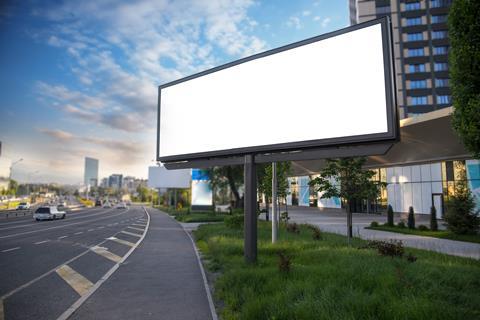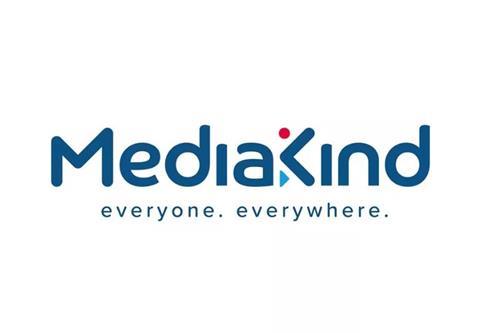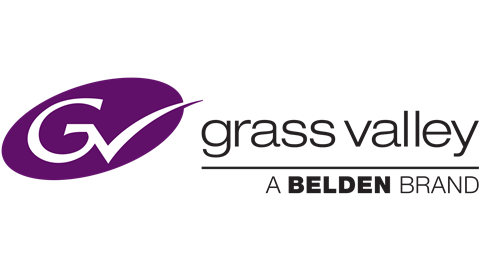Is ditching a legacy brand name a good idea – and, if so, how should you go about successfully rebranding a company? Two companies – the newly minted MediaKind and well known brand Grass Valley - weigh up the pros and cons of rebranding vs sticking with a heritage name.
Last month, media technology firm Ericsson Media Solutions announced that is rebranding - as MediaKind.

It’s a radical move for a company with a long history that is in the process of selling a majority stake to private equity firm One Equity.
What though of similar media technology companies with extensive track records: is it better to stick with an existing name or go for a full-blown re-brand?
To answer those questions, IBC spoke with two companies which have taken opposite paths while both going through periods of profound change: MediaKind and Grass Valley.
Both companies have grown muscular through consolidation, which meant cheerio for quite a few brands of yore. And both have been the subjects of recent acquisitions. The common factor is that both are in the process of re-inventing themselves.
MediaKind: Something different
The MediaKind brand will be carried forward when the transaction between One Equity Partners and Ericsson completes.

Asked why the old brand was kaput and how the new management team had found its new identity, MediaKind Chief Marketing Officer Arun Bhikshesvaran said: “Ericsson has a different ring and recognition to it, more in the Telecom sector, and it was synonymous with the founder.
“We embarked on a journey to create something different and enticing that can last a long time. The Media Solutions name the group was given was more of a holding pattern,” he added. “We talked internally about what we do for people, what we do for customers, and all the opportunities in the market that could create a position for a new company.”
This triggered a multi-stage search process for the new brand.
“We tried for a 360-degree perspective, and first we did a bit of discovery to establish a view of what the combined ambitions are and what we want to be,” said Bhikshesvaran. “We used that as a briefing for the agency partners we have around the world, so we would get enough diversity and ideas, because we were a global media technology company from day one.

The company got 10 ideas back, each of them with a write up explaining why their idea should win, plus logos and design materials.
“We ended up with three proposals and did a second round to pick two, and then ran a bake off between our top two in terms of situations around digital domain availability and linguistic suitability in multiple languages. At that point in time we engaged our internal community of employees for feedback, and collectively we brought it all together.”
“Look at MediaKind and think of it as a first name/last name kind of concept. Media is our first name and Kind our last name. Together it represents who we really are; we are a media kind of people, and at the same time we are serving up media across the globe for human kind,” said Bhikshesvaran. “MediaKind gives a nice ring to the ear, and it was culturally acceptable across the world.”
The name also allowed the new company to play with different logo typefaces around media functions such as play and record buttons and place and time shifting.
“In this new digital media age it is all about the ability to generate stories from everywhere and the ability to consume stories everywhere. That is our driving force, and what we want to enable for society,” he added.
With MediaKind as the new umbrella how can the company grow further from a start point of 900 customers in cable, satellite and broadcasting?
“We have some road to cover to get to a leadership position, but have a good start. There are possibilities to grow into other markets, and one area that we see is the safe, smart society. That will become increasingly reliant on video and processing video in near real-time to facilitate all kind of good life experiences,” said Bhikshesvaran.
He cites transportation information, neighbourhood security, traffic congestion data, safe local paths, regional pollution levels and good school options.
“There are so many different opportunities out there to enable the smart society. This is the umbrella we will start to expand out into.”
“Media is our first name and Kind our last name. Together it represents who we really are.” Arun Bhikshesvaran, MediaKind
Grass Valley: Six decades of change
Grass Valley’s six-decade journey as a top brand name has seen many changes – but it has stuck resolutely with its name.
Its latest home in terms of ownership is with the Belden Group.” When Belden bought Grass Valley and it was merged with Miranda, the logo was changed from green to purple. The old ‘G check’ logo was converted from a green rectangular background to a purple ellipse background, and the typeface was changed to fit the Belden style,” said David Cohen, Vice President Marking Communications at Grass Valley.

There were other changes over the years – it merged with Tektronix and was acquired by Thomson, and then became Grass Valley Group, before the ‘group’ dropped away.
How has the brand managed to sustain for so long? “One of the keys is consistency, being present in the industry with really good products throughout the decades. We have also been able to maintain really strong high level relationships with the largest broadcasters all over the world,” said Cohen.
“This goes a long way to promoting our brand.”decades. We have also been able to maintain really strong high level relationships with the largest broadcasters all over the world,” said Cohen. “This goes a long way to promoting our brand.”
But has Grass Valley transitioned into the new software defined era with its user base in harness?
Cohen thinks Grass Valley has, but it hasn’t been easy. “It is about being able to shift the wider market’s notion about who Grass Valley is, and what we stand for. When people have a misplaced perception of your brand it is extremely challenging to shift that into a new paradigm and keep up with technology change,” said Cohen.
“The most important thing is that people understand through the way we talk, and the way we carry ourselves,” he added. Grass Valley, for example, puts technical staff out in the market to talk about the development of standards and workflows.
“This is to get people into the new IP and virtual world, and into the software defined future. It certainly is not easy, but we are prepared for it, and we think many users are now appreciating this approach,” said Cohen.
“There are challenges that face you as an older brand. We believe that being professional, staying above the fray, and being honest with people is the best way to maintain a positive brand image,” said Cohen.

What about mothering the brand against competition that includes brands that have undergone similar reinvention, and multiple start-ups?
“In general we see our brand legacy as a huge advantage, for multiple reasons. But it does require us to look at what the brand says to people in the market, and ask how we keep up with a younger company or a company that comes at broadcast from a different direction,” said Cohen.
“We always believe that our broadcast expertise legacy is something we can leverage to people who are looking to create and distribute content. And we can pivot off that by selling the new technology story. So much of our business is now dependent on software offerings: this and the virtual demos running at IBC we believe will solidify the impression that Grass Valley gets it in terms of transitioning, and that we are progressive as a brand.” progressive as a brand.”
























No comments yet